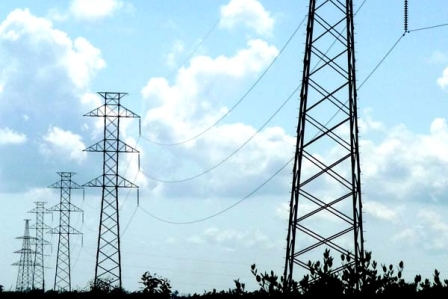Permissible voltage deviations in electrical networks
The deviation of the voltage in the electrical network is the difference between its current actual value in a stable operating condition from the nominal value for a given network. The reason for the voltage deviation at any point of the power grid lies in the change in the load of the grid, depending on the graphs of the different loads.
Voltage deviation affects the operation of the equipment. So, in technological processes, reducing the supply voltage leads to an increase in the duration of these processes and, as a result, production costs increase. And the increase in voltage shortens the life of the equipment because the equipment begins to work with overload, which increases the likelihood of accidents. If the voltage deviates significantly from the norm, then the technological process can be completely disrupted.

Using the example of lighting systems, we can point out the fact that with an increase in voltage by only 10%, the operating time of incandescent lamps decreases four times, that is, the lamp burns out much earlier! And with a 10% reduction in supply voltage, the luminous flux of an incandescent lamp will decrease by 40%, while the luminous flux for fluorescent lamps will be 15%. If, when turning on the fluorescent lamp, the voltage turns out to be 90% of the nominal, it will blink, and at 80% it will not start at all.
Asynchronous motors are very sensitive to the supply voltage of the device. So, if the voltage on the stator winding drops by 15%, then the shaft torque will decrease by a quarter and the motor will most likely stop, or if we are talking about starting, the induction motor will not start at all. With a reduced supply voltage, the current consumption will increase, the stator windings will heat up more and the normal life of the motor will be greatly reduced.
If the motor is operated for a long time at a supply voltage of 90% of the nominal, then its service life will be reduced by half. If the supply voltage exceeds the nominal by 1%, then the reactive component of the power consumed by the motor will increase by approximately 5%, and the overall efficiency of such a motor will decrease.
On average, electrical networks regularly deliver the following loads: 60% of energy falls on asynchronous electric motors, 30% on lighting, etc., 10% on specific loads, for example, the Moscow metro accounts for 11%.For this reason, GOST R 54149-2010 regulates the maximum permissible value of the established deviation in the terminals of electrical receivers as ± 10% of the nominal network. In this case, the normal deviation is ± 5%.
There are two ways to meet these requirements. The first is to reduce losses, the second is to regulate voltage.

Ways to reduce losses
Optimization R — selection of the cross-section of the conductors of the power line in accordance with the rules under the conditions of minimum possible losses.
Optimization of X — the use of longitudinal compensation of line reactance, which is associated with the danger of increased short-circuit currents when X → 0.
The Q compensation method is the use of KRM installations to reduce the reactive component during transmission through power networks, using capacitor blocks directly or using synchronous electric motors operating under overexcitation. By compensating the reactive power, in addition to reducing the losses, it will be possible to achieve energy savings, since the total electrical losses in the networks will decrease.

Ways to adjust voltage
With the help of transformers in the power center, the voltage Utsp is regulated. Special transformers are equipped with automatic devices for adjusting the transformation ratio according to the current value of the load. Adjustment is possible directly under load. 10% of power transformers are equipped with such devices. The control range is ± 16%, with a control step of 1.78%.
Transformers of intermediate substations Utp, windings with different transformation ratios, which are equipped with switching taps on them, can also perform voltage regulation. The control range is ± 5%, with a control step of 2.5%. Switching here is done without excitation — with disconnection from the network.
The power supply organization is responsible for constantly maintaining the voltage within the limits regulated by GOST (GOST R 54149-2010).
In fact, R and X can be selected even at the design stage of the electrical network, and further operational change of these parameters is impossible. Q and Utp can be adjusted during seasonal changes in network loads, but it is necessary to centrally control the operating modes of the reactive power compensation units, in accordance with the current operating mode of the network as a whole, that is, the power supply organization should do this.
As for Utsp voltage regulation — directly from the power supply center, this is the most convenient way for the power supply organization, which allows you to quickly adjust the voltage exactly according to the network load schedule.
The electricity supply contract defines the limits of voltage variation at the user's connection point; when calculating these limits, it is necessary to rely on the voltage drop between this point and the electrical receiver. As mentioned above, GOST R 54149-2010 regulates the permissible values of deviations in the steady state of the terminals of the electrical receiver.
